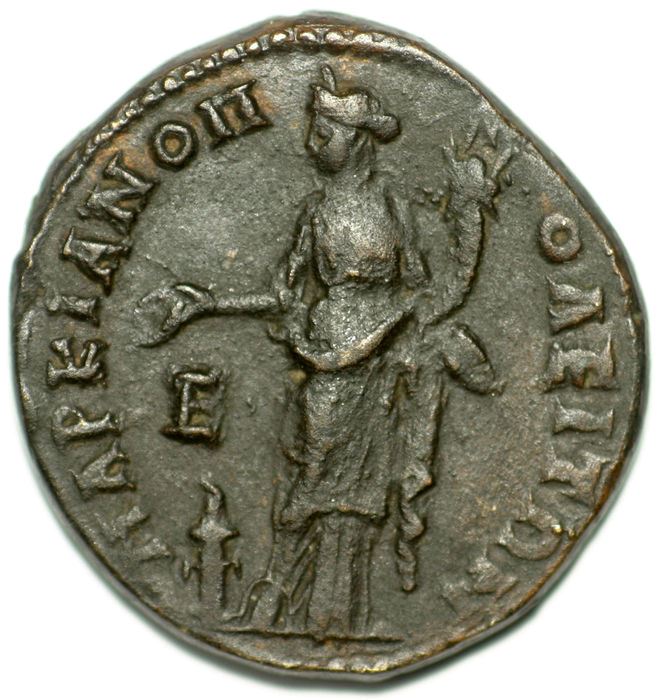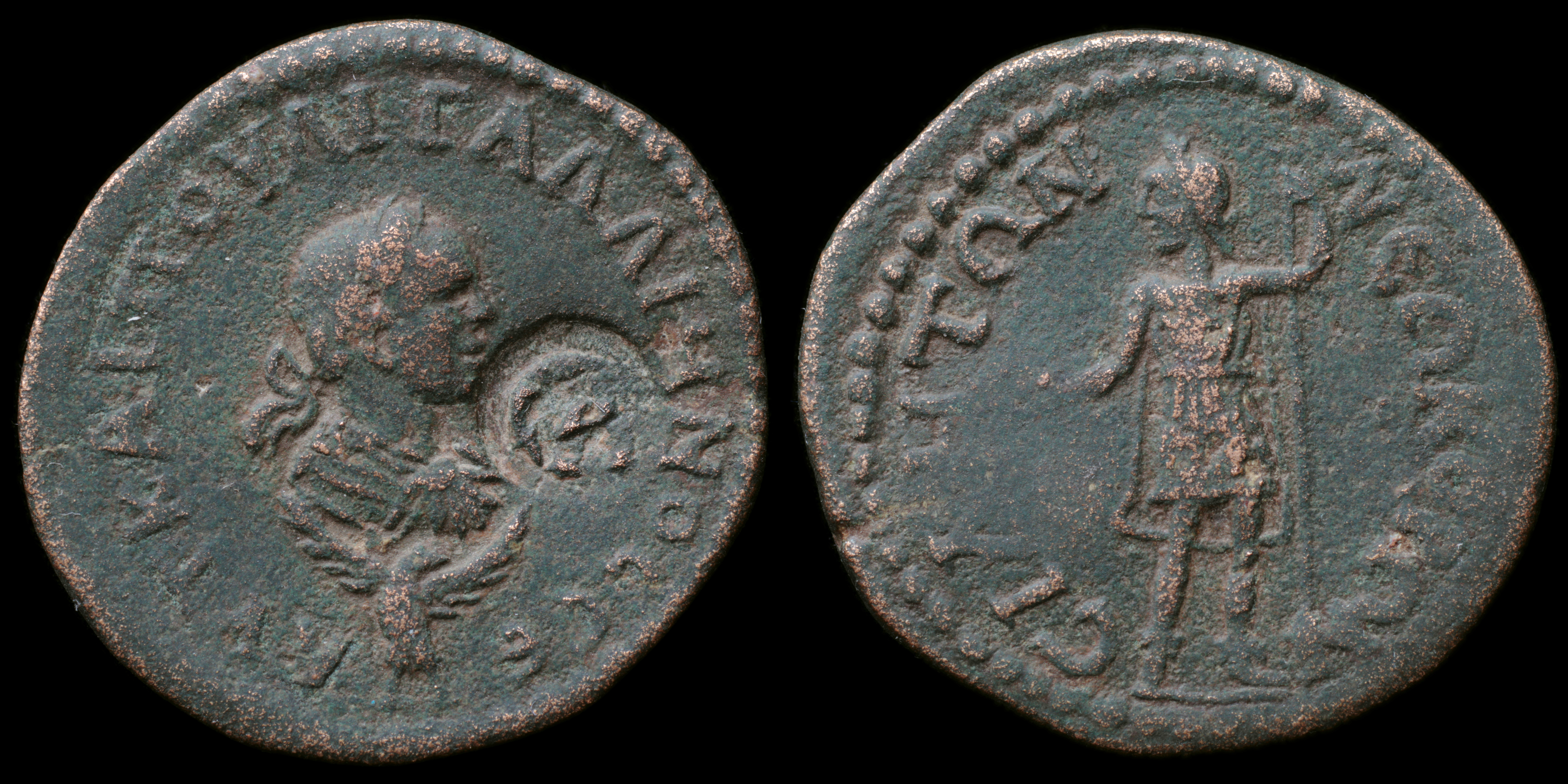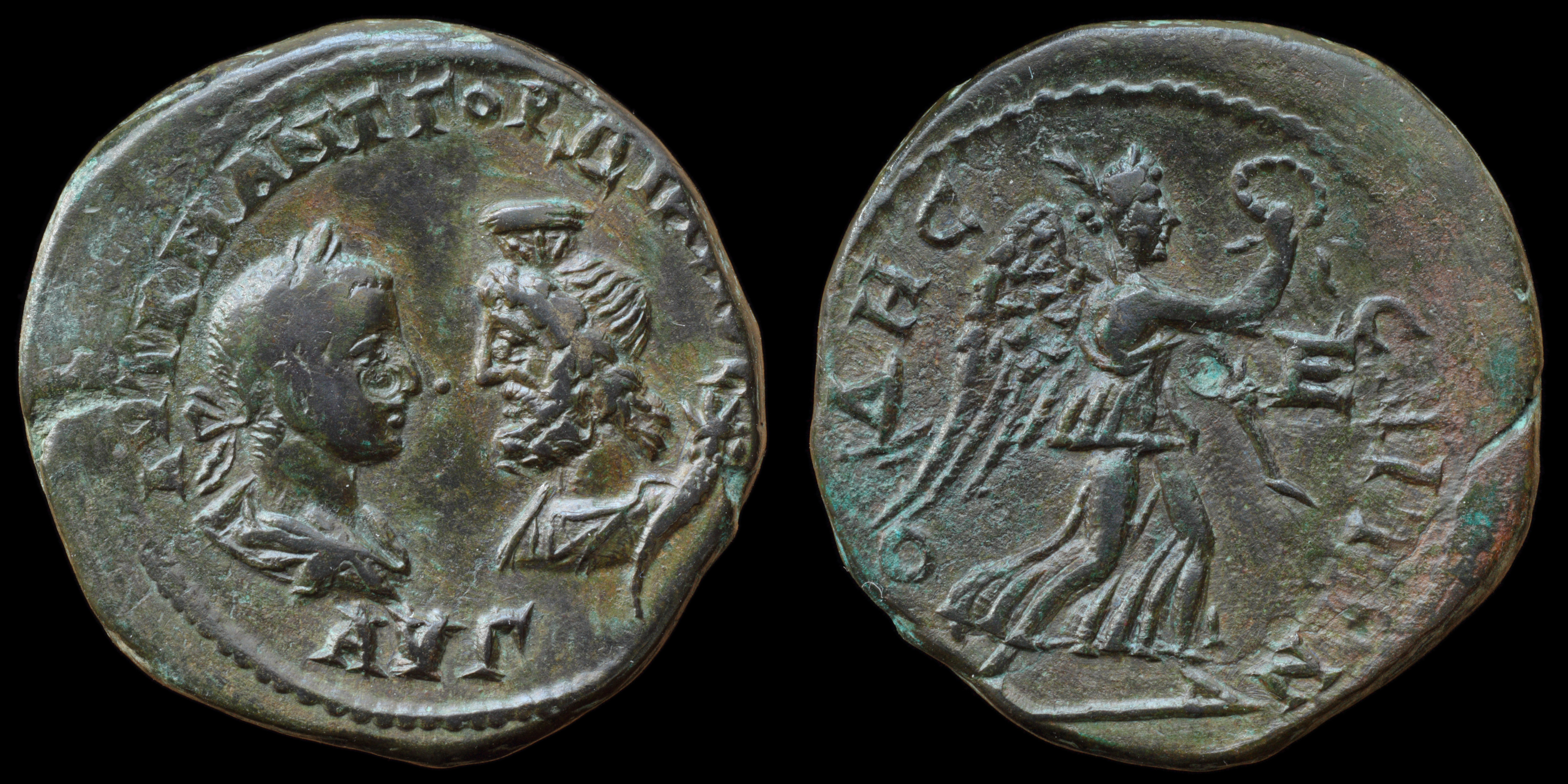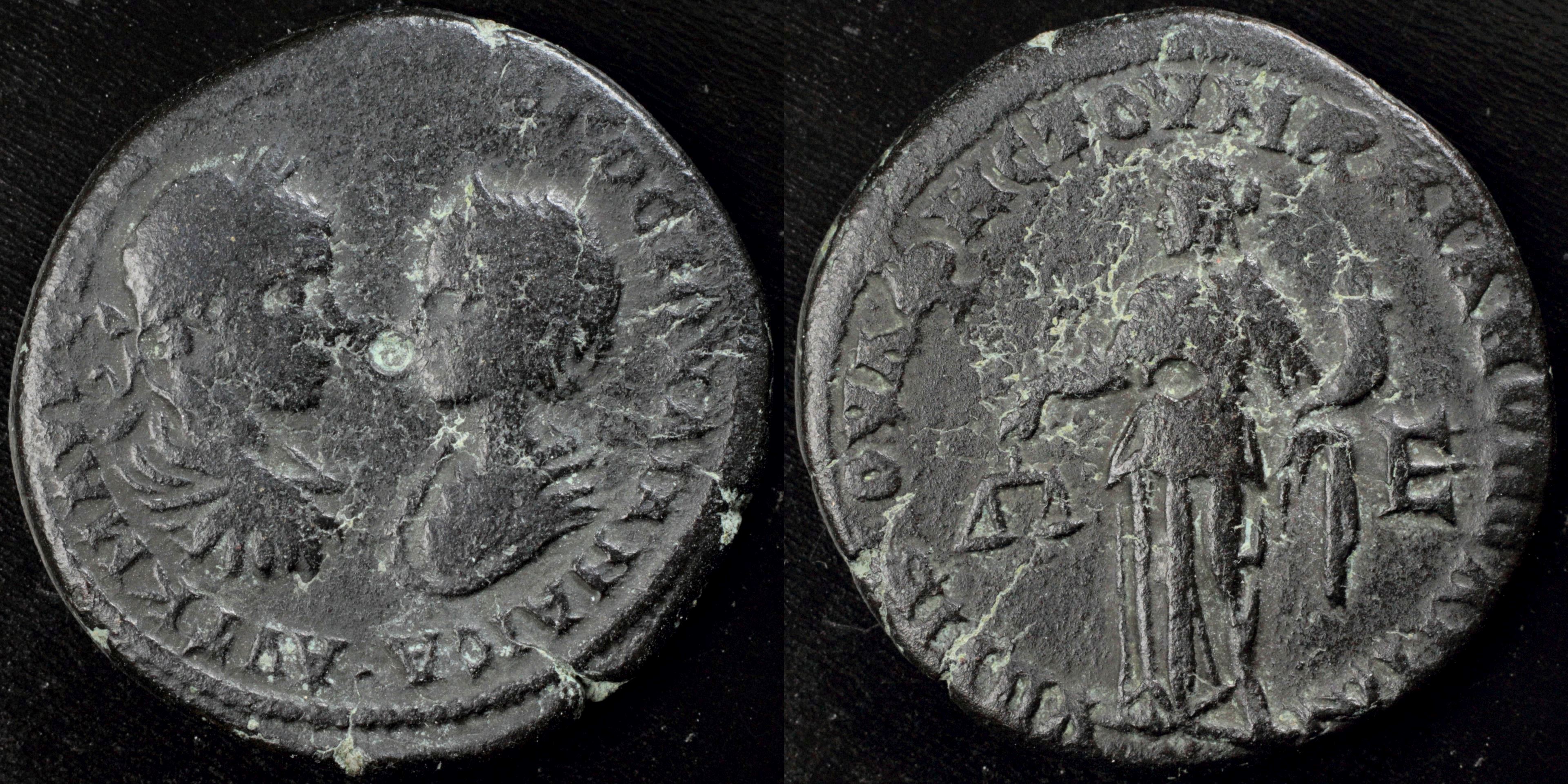It was commonly struck by Roman Provincial mints, and was not struck to a standard weight but rather to some local standard. It was simply a coin worth 5 of the local basic coin denomination.
The pentassarion was commonly marked with an E or epsilon on the revserse denoting '5'.

.jpg)
Reverse: VΠA KVNTIΛIANOV MAPKIANOΠOΛITΩ-N, Tyche Soteiros (Fortuna Redux) standing left, holding rudder in outstretched right hand and cornucopiae in left; E in upper left field.
Die Orientation: -
Weight: -
.jpg)
Reverse: Homonoia standing left, holding patera and cornucopia; E (mark of value) to right.
Die Orientation: -
Weight: 12.05 g

Reverse: Apollo Sidetes facing, head left, holding phiale and scepter; CIΔHTΩN__NEΩKOPΩN
Die Orientation: -
Weight: 18.5 g

Reverse: Nike advancing right, holding wreath and palm; O_ΔHC_CEITΩN / E
Die Orientation: -
Weight: 14.7 g
.jpg)
Reverse: OΔHCCЄITΩN: Nemesis standing left, holding wand over wheel, and sceptre.
Die Orientation: 1 H
Weight: 13.54 g
.jpg)
Reverse: VΠ ΠONTIAN-O-V MAPKIANOΠOΛEI / TΩ-N / Demeter standing right, holding 2 corn-ears in left hand and a sceptre in right. E in upper right field
Die Orientation: -
Weight: 11.9 g
.jpg)
Reverse: MAPKIANOΠOΛEITΩN, bearded serpent coiled left; E (mark of value) to right
Die Orientation: 1 H
Weight: 12.42 g

Reverse: Dikaiosyne (Aequitas) standing half left, holding scales and cornucopia; VΠ TIB IOVΛ ΦECTOV M(AP)KIANOΠOΛIT(ΩN) / E
Die Orientation: -
Weight: 11.12 g
